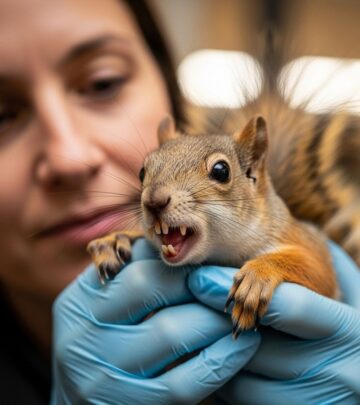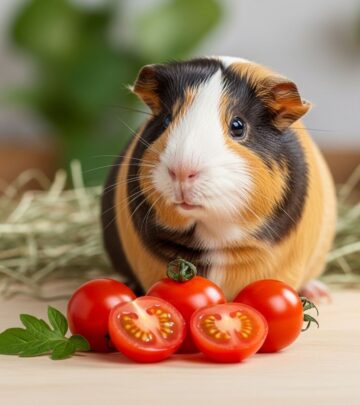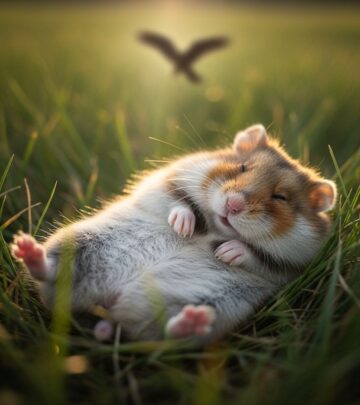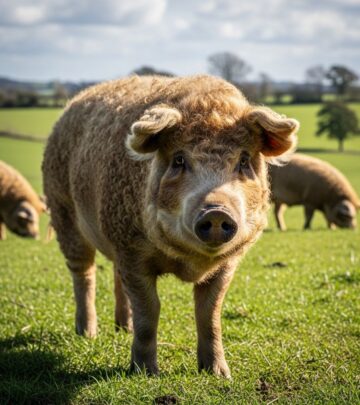Should You Dress Up Your Guinea Pig? The Truth About Guinea Pig Clothes
Balancing playfulness and safety helps your furry companion stay calm and injury-free.
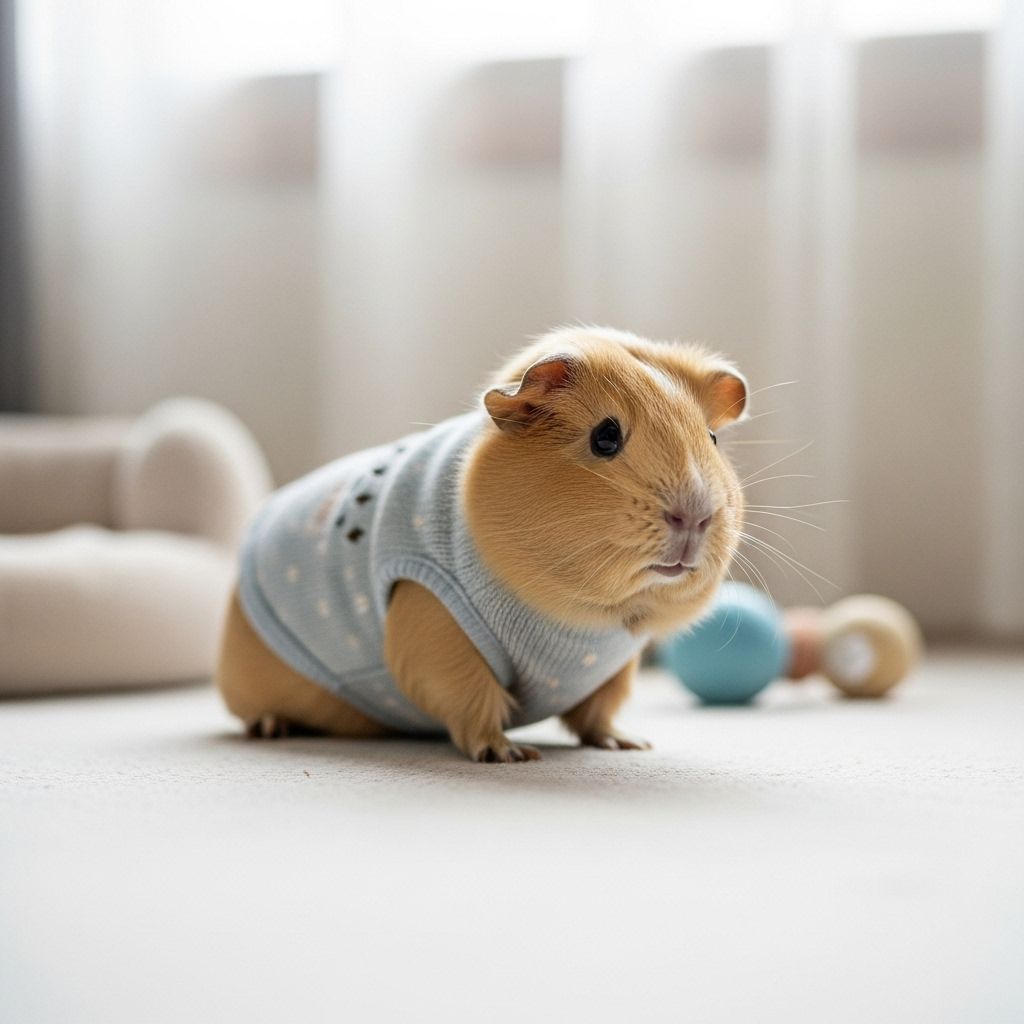
Guinea Pig Clothes: Should You Dress Up Your Guinea Pig?
When you scroll through social media, it may seem adorable to see guinea pigs dressed up in tiny costumes, capes, or hats. But before you reach for a miniature sweater or superhero cape for your own furry companion, it’s important to ask: is putting clothes on a guinea pig safe—or even ethical? This guide draws on the best available sources to explain what you need to consider about guinea pig clothing, their welfare, and how to keep these beloved pets happy and healthy.
Why People Want to Dress Up Their Guinea Pigs
Dressing small pets has grown in popularity, fueled by cute photos and the fun of holidays or themed photoshoots. Pet owners often see guinea pig clothes as:
- A way to express their love and creativity.
- Fun for social media moments or family photos.
- Protection from the cold or drafts.
- A way to support healing after surgery (in rare cases).
But despite the appeal, it’s vital to remember that what delights humans may distress or endanger a guinea pig.
Understanding Guinea Pig Anatomy and Sensitivity
Guinea pigs possess natural fur coats designed for body temperature regulation. Unlike dogs or cats, their skin is delicate, thin, and highly sensitive to changes in their environment and tactile sensations. Whenever something new, such as clothing, is placed on them, guinea pigs can perceive it as uncomfortable, foreign, or even traumatic.
- Guinea pigs rely on their sense of touch to navigate and understand their surroundings.
- Their skin is susceptible to irritation by rough fabrics, elastic bands, or inconvenient fasteners.
- Restricted movement caused by clothing prevents normal behaviors like grooming, foraging, and quick escape from threats.
The Potential Benefits: Are There Valid Reasons to Dress a Guinea Pig?
Most animal welfare experts agree that dressing guinea pigs should only be considered in very specific circumstances. Here are the two main exceptions:
- Protection from cold: In rare cases—such as a particularly chilly environment that cannot be otherwise warmed—light, breathable garments may help retain warmth. However, it is always better to improve the living environment first rather than rely on clothes.
- Medical or post-surgical care: After some surgeries or injuries, veterinarians may temporarily recommend soft, specially designed coverings to prevent a guinea pig from scratching or chewing wounds. These garments should be prescribed and fitted by a vet for safety.
Even in these rare cases, guinea pig clothing is a last resort, should be used only under close supervision, and with guidance from a veterinarian.
The Risks and Concerns: Why Clothes Can Be Dangerous for Guinea Pigs
- Stress and Anxiety: Even short sessions in clothes can cause distress. Guinea pigs demonstrate anxiety by hiding, freezing, refusing to eat, or becoming inactive. High stress can suppress their immune system, making them more likely to develop illnesses.
- Overheating: Guinea pigs can rapidly overheat under clothing, since their natural fur already provides insulation. Any extra layer may disrupt their ability to regulate body temperature and lead to heatstroke.
- Restricted Movement: Clothes can make grooming, running, burrowing, or eating difficult or impossible, impeding their natural behaviors.
- Skin Irritation and Allergic Reactions: Synthetic fibers, rough textiles, or tight elastics may chafe, cause sores, or set off skin allergies. Self-inflicted scratches can then become infected.
- Strangulation and Injury: Fastenings like straps, buttons, or strings that go around the neck pose a significant choking or strangulation hazard, sometimes even fatal.
- Panic and Physical Injuries: Guinea pigs can panic when unable to escape from restrictive clothing, risking bites, broken bones, damaged skin, or even spinal injury.
Table: Dangers of Dressing Guinea Pigs
| Risk Type | Description |
|---|---|
| Stress & Anxiety | Fearful, withdrawn, or ill due to sudden new sensations. |
| Overheating | Body cannot shed heat; hyperthermia risk increases. |
| Skin Problems | Irritation, allergies, sores, and scratches from fabrics. |
| Grooming Problems | Unable to clean self, risking stress and infections. |
| Physical Injury | Risk of entanglement, tripping, or broken bones. |
What Might Be (Relatively) Safe for Short Photo Sessions?
If you absolutely want to include your guinea pig in a festive photo, the safest approach is to limit accessories to lightweight, non-restrictive items that fall off easily. For example:
- Capes draped loosely over their back (never tied or secured around the neck).
- Soft hats gently placed on their head without elastics or ties; remove immediately if they look uncomfortable.
- Tiny props placed beside rather than on the guinea pig.
These types of accessories should never be left on a guinea pig unsupervised. Ensure they are never restrictive, do not enclose any part of the body, and do not impede movement. Never force your guinea pig into an outfit if they show signs of distress, panic, or discomfort.
Why Guinea Pig Environments Are the Best “Outfit”
The primary way to keep a guinea pig warm, safe, and content is to provide a controlled, draft-free environment with enriched bedding and places to hide. This keeps your pets happy and healthy without the stress and danger of clothes. If you’re concerned about warmth, adjust the room temperature and increase the bedding rather than relying on garments.
How to Tell If Your Guinea Pig Is Unhappy in Clothes
- Hiding longer than usual
- Becoming motionless or “freezing”
- Refusing to eat, drink, or interact
- Attempts to scratch, bite, or remove the clothing
- Rapid breathing or struggling
If you observe any of these behaviors, remove the clothing immediately and monitor your guinea pig for signs of ongoing distress or health issues.
Ethical Tips for Guinea Pig Owners
- Prioritize welfare over cuteness: Ask if dressing your pet is for their benefit, or yours.
- Check with your vet: Only use clothing for post-surgical protection under veterinary supervision.
- Supervise at all times: Never leave a guinea pig clothed and unattended.
- Watch for signs of stress: Learn to recognize if your guinea pig is uncomfortable or afraid. Always remove the clothing at the first sign of distress.
- Avoid restrictive or tight outfits: Never dress a guinea pig in clothes that wrap around their neck, chest, or legs, or have fixtures that could entangle them.
Frequently Asked Questions (FAQs)
Q: Are guinea pig clothes safe?
A: Generally, no. Guinea pig clothes often cause discomfort, stress, or serious health risks. The only exceptions are for short, supervised periods for photos, or special post-surgical garments prescribed by a vet.
Q: Can guinea pigs wear sweaters or hats?
A: Guinea pigs should not wear sweaters, as these are restrictive and can overheat them. For hats, if they are gently placed on the head just for a photo and then quickly removed (with no securing string under the chin), it may be tolerated for a very short period—but only if your guinea pig is calm and shows no sign of distress.
Q: What are signs my guinea pig is stressed by clothing?
A: Signs include hiding, freezing in place, loss of appetite, excessive scratching, biting at the clothes, and rapid breathing. Remove the clothing immediately if you notice any of these behaviors.
Q: How do I keep my guinea pig warm without clothes?
A: Ensure their habitat is indoors and draft-free, provide plenty of cozy bedding (like fleece or hay), and avoid placing cages near windows or doors where cold drafts enter.
Q: When is it OK to put a guinea pig in clothing?
A: Only when a veterinarian recommends it for post-surgical recovery, or in extreme cold as a last resort—but always under close supervision and using soft, breathable, specially designed materials.
Key Takeaways for Pet Owners
- Guinea pig clothes may look cute, but their welfare and comfort must come first.
- In almost all cases, guinea pigs should not be dressed up—especially not with straps, elastics, or tight apparel.
- If you want to take a cute photo, opt for a draped cape or nearby props (never secured or restrictive), and limit dress-up to a few seconds only.
- Your pet’s well-being always outweighs the momentary cuteness of tiny clothes.
Guinea pigs are happiest when they’re free to be themselves—natural, cozy, and costume-free. Celebrate them for who they are, not for the outfits they wear!
References
Read full bio of Sneha Tete








